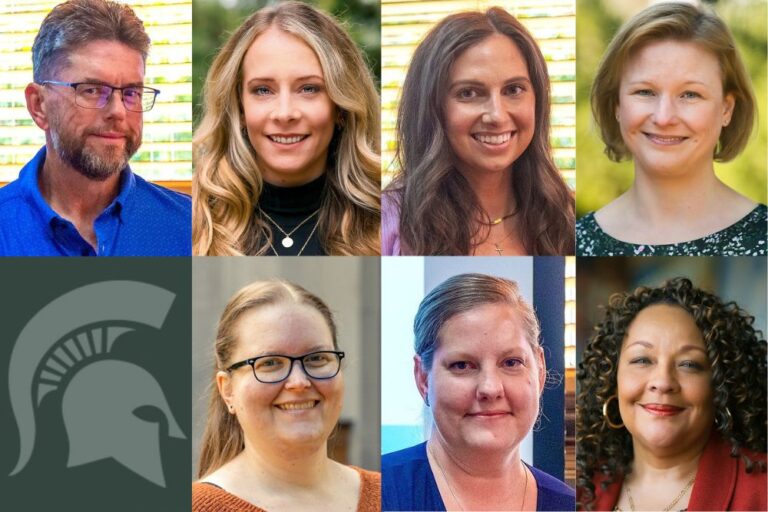Touching artwork at museums is almost always forbidden.
But the “Accessible Art” exhibit at the Eli and Edythe Broad Art Museum asked museumgoers to do just that.
“Exceptions,” a student-run art and literary journal for students with visual disabilities, hosted the “Accessible Art” exhibit to show that art in exhibitions can be inclusive to those with visual disabilities.
The editorial team at “Exceptions” commissioned original poems from students enrolled in a poetry course with Robin Silbergleid. The poems then served as inspiration for students enrolled in Alisa Henriquez’s studio art course. The resulting works display a wide range of interpretations and appeal to visitors both sighted and blind.
“Accessibility in museums is slowly getting better, but it could be better,” said Katie Grimes, managing editor of “Exceptions.” “The things we’re doing to make this exhibit available to people across the visual ability spectrum is not that hard.”
Mike Hudson, director of MSU’s Resource Center for Persons with Disabilities, is optimistic that future art museums will look to the Eli and Edythe Broad Art Museum and identify new strategies that can make a difference for those with disabilities.
“The notion that you can go into a flagship museum and find ways to be included, despite disabilities, is phenomenally powerful and something that really connects well with the MSU tradition of quality, inclusiveness and connectivity,” Hudson said.
Michelle Word, director of education at the museum, said the question of accessibility within the arts is important to the museum.
“I think about how we can make the museum more welcoming and comfortable to a wide audience and share art with them in different ways,” Word said.
Alisa Henriquez, professor in the Department of Art, Art History and Design, said creating the work was a different experience for students because visual artists don’t usually consider their work as ever being touched.
“The bringing together of poets and visual artists is a very wonderful idea,” Henriquez said. “They are similar art forms and it was challenging for students to make work for visually impaired museumgoers.”


